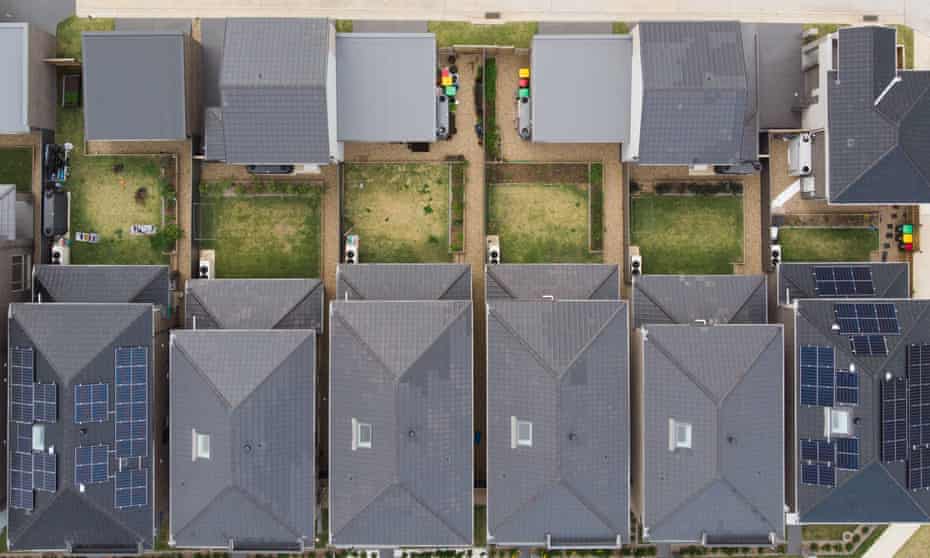Extract from The Guardian

Property is Australia’s default religion. As of early 2022, the total value of residential real estate was about $9.8trn, two-thirds of total household wealth of $14.7tn. This affluence is increasingly problematic.
In Australia housing is no longer simply shelter but an investment and store of savings. Like a magic pudding, home equity (current value less any mortgage) is expected to fund consumption, provide for retirement and be passed on to your progeny.
Property’s attractiveness is understandable. It provides secure shelter, converts rent to a form of savings, and rising values have historically protected purchasing power. It creates well-paid, difficult-to-offshore, local construction jobs. Policymakers can influence activity through zoning laws, land releases, home ownership incentives, interest rates and loan availability. It is popular with voters.
But the resulting over-investment creates several problems.
1. It ties up household savings
Household savings become concentrated in a single, illiquid asset. Volatile property prices pose risks, especially as purchases typically involve substantial borrowing. Exceptional price rises reflect the confluence of strong population growth, land shortages around major cities, generous tax regimes, incentives, favourable regulatory treatment of mortgages, ultra-low interest rates and abundant credit. This past performance is no guarantee of future values.
2. It ties up capital
Across the economy, it ties up a large amount of capital, which does not generate ongoing income, as business investments would. High house prices limit wage flexibility and contribute to Australia’s uncompetitive cost structures. It impedes labour mobility. Households cannot relocate where they cannot find suitable affordable accommodation or trade their existing houses on acceptable terms.
3. Governments become reliant on real estate revenue
Governments become dependent on real estate revenue. Property taxes account for probably more than 30% of state government revenues. Local municipalities rely almost exclusively on this source of income.
4. It creates high household debt
At 130% of GDP, Australia’s household debt is among the highest in the world. Household borrowing to disposal income on average exceeds 200%, four times that of the 1980s. The Australian banking system is heavily exposed to property prices, with residential mortgages constituting more than 60% of total loans, one of the highest levels globally and more than double that in the US and UK.
5. It constrains policy
Maintaining house prices and ensuring the ability to meet mortgage repayments disproportionately influences interest rate settings at the expense of managing inflation or properly compensating savers. This is because, despite record low interest rates debt servicing takes up approximately 13% of income, above the levels of three decades ago when interest rates were near 20%. Immigration and environmental policies must factor in the impact on housing. Elevated prices risk financial instability. History shows that managing runaway property markets without a severe economic slump or financial crisis is difficult.
6. It masks low wage growth
High house values hide stagnant wages and moribund living standards. Housing unaffordability exaggerates inequality, which perpetuates across generations.
7. Wealth may be illusory
High prices mean that many homebuyers will never pay off their mortgages, instead effectively paying a monthly fee in perpetuity – a “housing-as-a-service” model.
Even owners who bought their houses in earlier, more fortunate times, may find that their gains are modest. A quadrupling of house prices over 20 years equates to 7% annually, before annual occupation and interest costs.
Owners find themselves asset-rich but income poor. Residences do not provide cashflow and instead necessitate expenditure on rates, utilities, insurance and maintenance. Accessing paper wealth for living expenses requires borrowing against housing equity or downsizing to release cash. But selling may net less cash than expected as the replacement accommodation will have increased in price. The exchange requires available creditworthy buyers and willing lenders. If a large proportion of baby boomers try to down-scale simultaneously, house prices will adjust, reducing the money freed up. Transaction costs of 3% to 5%, such as agent fees, stamp duty and conveyancing, also reduce gains.
Major political parties have sought to increase access to housing. While welcome, their policies only assist a limited number of individuals. The additional demand further increases prices and competition for properties, negating benefits. They do not deal with the fundamental problems, failing to address home ownership’s function in our society and economy.
While integral to the Australian dream, home ownership has created low-quality, unbalanced growth and deceptive prosperity while contributing to the nation’s structural problems and rigidity. Australia’s reliance on property is now deeply entrenched and probably irreversible. As Winston Churchill observed: “We shape our buildings; thereafter they shape us.”
Meaningful debate is difficult. The two-thirds of Australians who own houses, outright or with a mortgage, will not entertain measures, no matter how well-conceived, that might threaten the value of their principal asset and wealth.
No comments:
Post a Comment